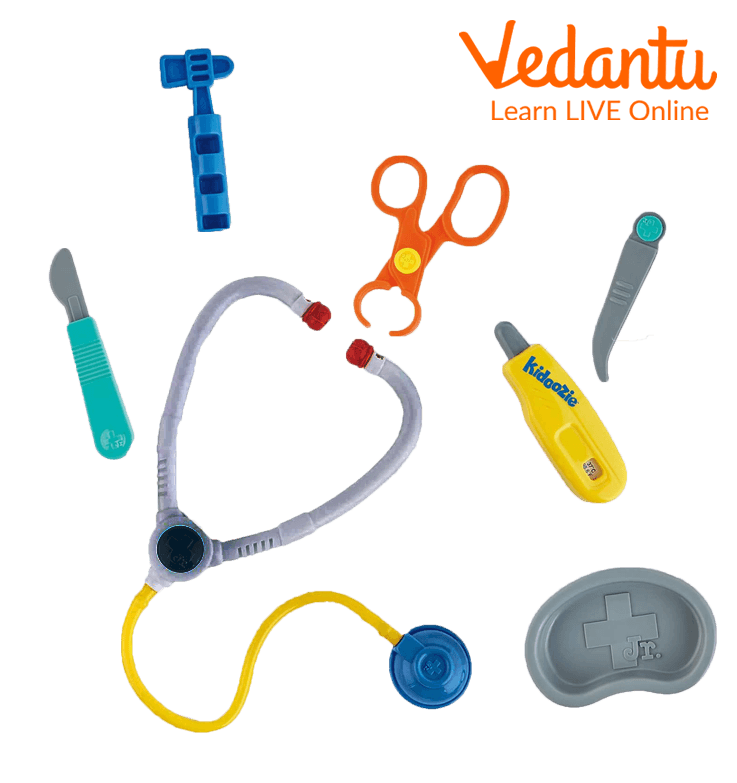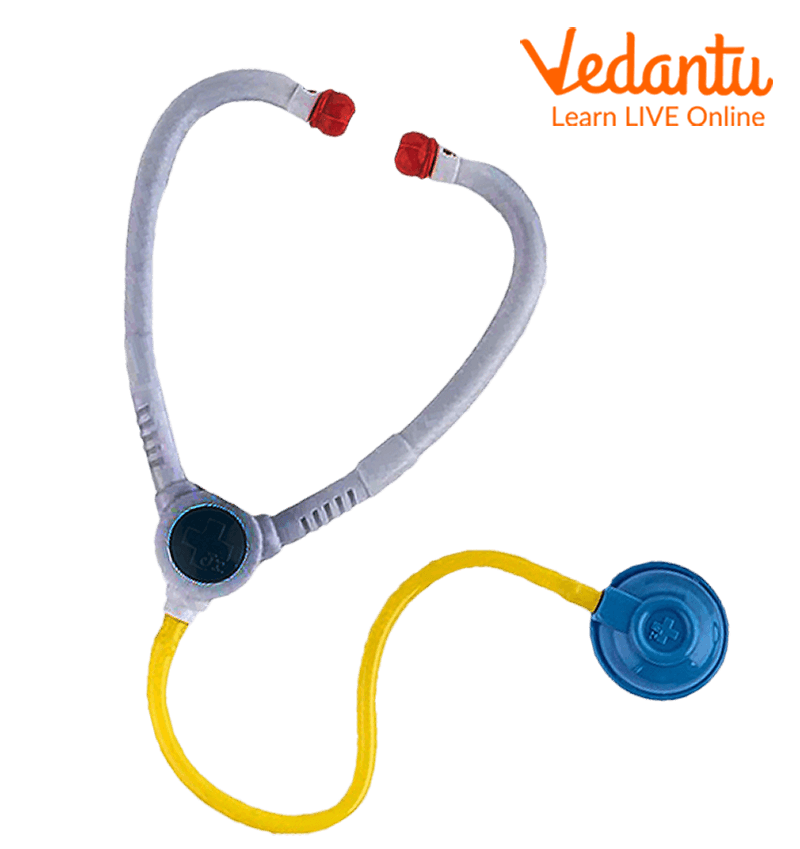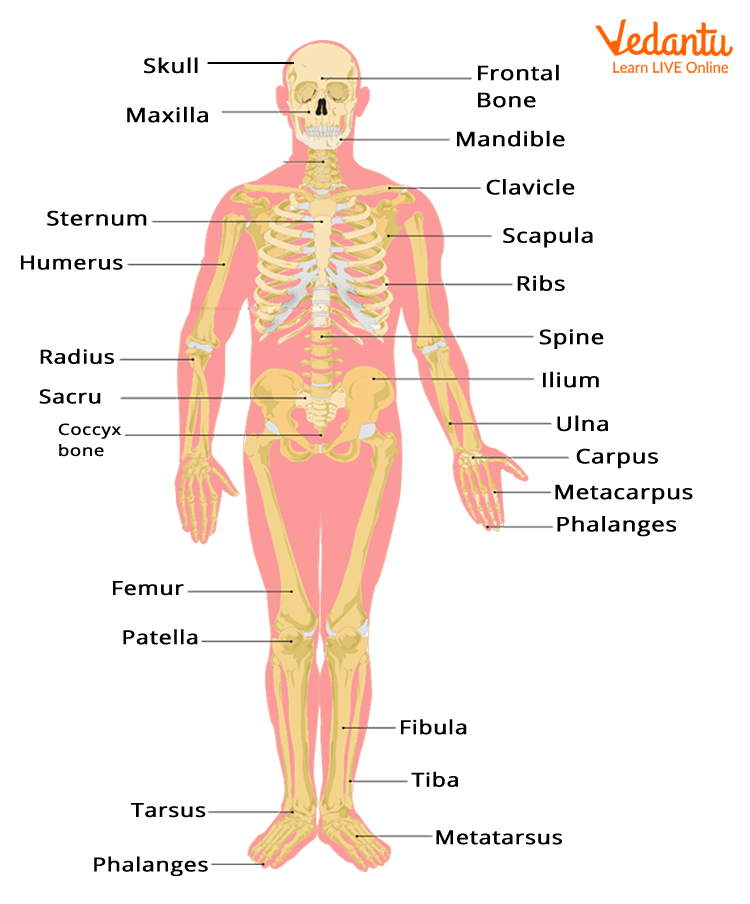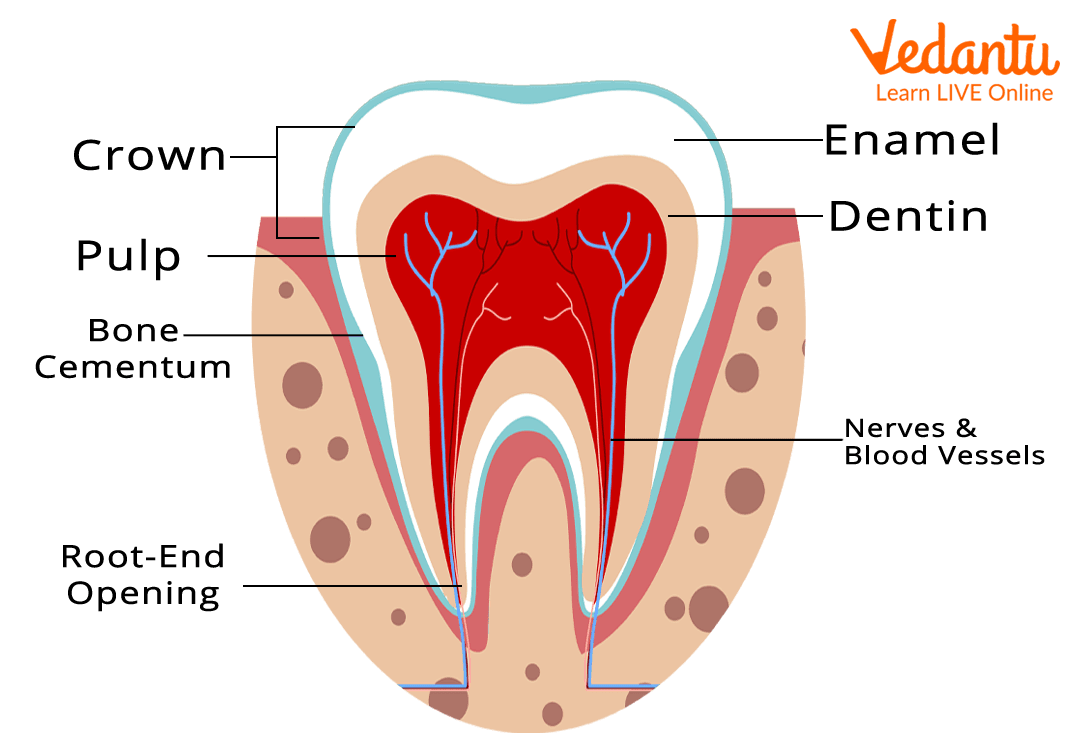




Key Responsibilities: How Doctors Support Patients Daily
Have you ever wondered what it would be like if you become a doctor for a day? After all, being a little doctor wearing a spotless white apron and carrying a tiny doctor’s briefcase can be exciting. You can treat your patients and the bittersweet syrups and painful injections won’t be for real. Well, yes! This amazing idea can work quite well with a kids’ doctor set. You can perform all the doctor's activities that you want on your toys or friends. The best part is that at the end of your playtime, you will be wiser and well-aware of your body parts and systems.

Image of a doctor’s set for kids
Let us now go through some of the most fun ideas on doctor activities for kids.
Using a Stethoscope

Image of a stethoscope
What is the first thing that you can spot at a doctor’s clinic? It may be a white apron, a stethoscope, an injection syringe, and so many other things. However, the first thing that a doctor uses for our check-up is a stethoscope. There is a mini version of this device in the kids’ doctor’s kit. You can use the stethoscope to listen to heartbeats. Put the round rubber structures attached at the two free-ends of a stethoscope in your ears. Place the flat-end of it on the patient's chest. Keep moving it on his chest, you will find the spot where your heartbeat can be heard. Also, you can try out various DIY stethoscope ideas and enjoy exploring what all your curious mind is capable of.
First-Aid Activity
Every kids’ doctor kit has the basic equipment for the first aid activity. Read out the instructions given in the kit and try the first-aid activity on your friend or your toys. First things first, you must assess the wound before beginning with the first aid. This can be your go-to game for a couple of days. On day 1, try the first aid steps for a bruise, on day 2, try the instructions for a deep cut, and so on. Just ensure that you understand the instructions and remember them. Also, you may try this doctor activity with your parents and ask them about things that are new to you.
Using Thermometers
You must have come across a thermometer at your home. It might have come your way when you had a bad fever and some strong syrups followed. Well, do not just frown at the thermometer for getting you into medicines that taste bad. Instead, learn about it and make it a regular activity in your playroom. Thermometers are devices that give us a measurement of temperature. To begin with, go for the electronic thermometers as they are easy to handle.
Try checking the temperature of your body when you do not have a fever, and note it down. Also, you can try measuring the temperature of your body at different times of the day, like when you step out of your blanket in the morning; when you take a hot shower; when you stand in a chilly breeze, and so on.
Measuring the Blood Pressure
There must be a tool in your doctors’ kit that has a cloth rolled into a tube along with a circular metre. Well, it is a kids’ version of the device used to measure blood pressure. Though you may not need to use it on elders, having the know-how of this device can surely be fun. Wrap the cloth cover on any arm of your doll, and fit it tightly around. The real device has a rubber bulb-like structure attached, controlling which the blood pressure can be read on the circular metre. A stethoscope is used with this device, to listen to the pulse beats.
Identifying the Human Bones

Image of the human skeletal system
You may have learned that there are 206 bones in the human body. When we hurt our knees, elbows, wrists, ankles, or any other bones of our body, the doctor uses a tuning fork to diagnose any fracture. Well, to check for any broken bones, we first need to identify them. Learn the names and location of the bones in our body. Arrange a fun activity among your friends and play a quiz on all that you learn. Try to locate and identify the bones on your body.
Learning the Tooth Nomenclature

Image of the parts of a tooth
Do you know our teeth have multiple layers? The one that we can see is only the outermost layer. Right inside the hard white layer, there are soft layers. You can make a model tooth with your craft stationery. Also, you may ask your friends to make one part each and then put it together. This is going to be fun when you use all the colour papers, scissors, glue, and maybe some glitter pens to make a tooth bigger than your own teeth. You may improvise any other ideas like putting some tiny white light strips to highlight the enamel, and so on. When you know about the structure of a tooth well enough, you may also try to check your teeth just like a dentist does but of course with the toy tools of your doctor activities’ set.
DIY Puzzles on the Human Body Systems
The DIY puzzles on the systems of the human body, call for an interesting playtime. The highly complex systems of our body are represented in the form of simple puzzle games. Some DIY puzzles come with paper strips instead of blocks. When the parts of the puzzles are put together in the right manner, a complete system is formed. Organs, blood vessels, tubules, and the other parts of a human body system are drawn on the puzzle blocks. Mostly, each unique part of a system is portrayed in a different colour, to make it easy to understand.
So when you see the systems inside our bodies, you can very well locate the organs in there. For example, if you play the doctor to your friend who has a make-believe stomachache, you can point out where his stomach is, and check his aching stomach like a doctor checks yours.
Conclusion
Among the various play-kits and activities, doctor activities are popular among kids. Though kids are not much fond of injections and medicines, kids playing with doctor toy sets is a common scenario at playdates. Not to mention that parents find the kids’ doctor’s kit to be quite an ideal toy set, as it comes in handy to make their trips to the paediatrician a lot easier.
There are a wide variety of doctor's activities for kids that help them to do away with the fear of visiting a doctor and develop healthy habits, of which the above 7 are some. So let your child explore many more fun activities for doctors’ games and get a basic perspective of the human body.
FAQs on 7 Basic Doctor Activities Every Student Should Know
1. What are some basic activities a doctor does to help us?
A doctor performs several basic activities to keep us healthy. These include:
Checking our temperature to see if we have a fever.
Listening to our heart and lungs with a stethoscope.
Looking into our ears and throat with a special light.
Giving us medicine or prescriptions to help us get better.
Measuring our height and weight to ensure we are growing well.
2. Why is it important for students to learn basic first aid, like how to clean and bandage a small cut?
Learning basic first aid is very important because it helps students act quickly and safely if they or a friend gets a small injury, like a scrape or a cut. Knowing how to clean a wound and cover it with a bandage can prevent infection and help it heal faster. It also teaches responsibility and makes students more confident and prepared during playtime.
3. What is a stethoscope and how do doctors use it?
A stethoscope is a medical tool that doctors often wear around their necks. They use it to listen to the sounds inside our body, especially our heartbeat and breathing. By placing the flat, circular end on our chest or back, they can tell if our heart and lungs are working properly and sound healthy, helping them find any potential problems.
4. Why do doctors give vaccinations or injections?
Doctors give vaccinations, which are a type of injection, to protect our bodies from serious illnesses. These shots contain a tiny, weakened part of a germ that teaches our body’s immune system how to fight it off. This way, if we ever encounter the real germ in the future, our body already knows how to defend itself, keeping us from getting very sick.
5. What is the difference between what a general doctor and a dentist checks?
The main difference is the part of the body they focus on. A general doctor checks your overall health, including your heart, lungs, and ears, and treats general illnesses like fevers and colds. A dentist is a specialised doctor who focuses only on your oral health, checking your teeth, gums, and mouth for issues like cavities and gum disease.
6. How does checking our temperature with a thermometer help a doctor?
A thermometer measures our body's temperature. This is a crucial activity because a change from our normal temperature, especially a high temperature (a fever), is often one of the first signs that our body is fighting an infection or illness. It gives the doctor a quick and important clue to help diagnose what is making us feel unwell.
7. How can we explain the role of a doctor to a young child?
To explain a doctor's role to a child, you can describe them as a 'health helper'. You can say that a doctor is a kind and trained professional we visit when we feel sick or for regular check-ups to make sure we grow strong and healthy. Explain that they use special tools, like a stethoscope or a small light, to understand what’s happening inside our bodies and help us feel better.
8. Besides giving medicine, what other important advice do doctors give to help us stay healthy?
Beyond treating sickness, doctors play a key role in preventing it. They give crucial advice on how to maintain a healthy lifestyle, which includes:
Eating a balanced diet with plenty of fruits and vegetables.
Engaging in regular physical activity and exercise.
Getting enough sleep each night.
Maintaining good hygiene, like washing hands regularly.















